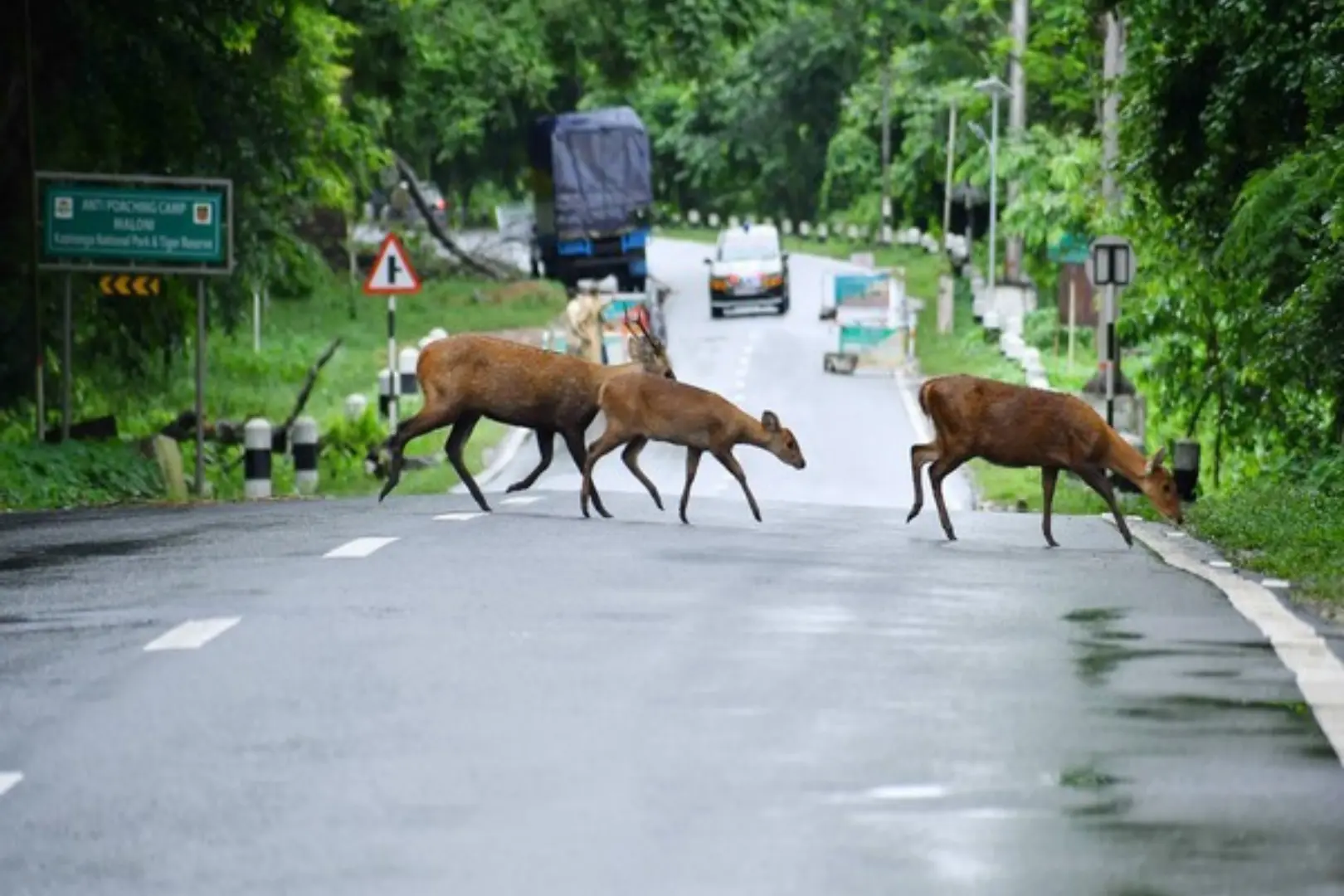04-Jul-2024, Thurs.
Assam Floods Devastate Kaziranga National Park. The ongoing floods in Assam have taken a heavy toll on the wildlife of Kaziranga National Park.
According to the latest reports, 17 wild animals, including a rhino calf and several hog deer, have drowned in the flood-affected areas of the park. However, the forest staff and local authorities have managed to rescue 72 animals from the submerged regions. The heavy rains and rising water levels have inundated large parts of Kaziranga National Park, forcing animals to seek higher ground. The park authorities have been working tirelessly to ensure the safety of the wildlife amidst the challenging conditions. Despite the best efforts, the loss of 17 animals is a tragic outcome of the floods. The rescued animals, including deer, wild boars, and one rhino calf, have been shifted to safer areas within the park or to the Centre for Wildlife Rehabilitation and Conservation (CWRC) for medical attention. The floods have also impacted the park’s infrastructure, with several camps and watch towers being submerged. The authorities are closely monitoring the situation and have taken measures to ensure the safety of both the animals and the park staff. Kaziranga National Park, known for its one-horned rhinoceros population, is a UNESCO World Heritage Site and a major tourist attraction in Assam. The park is home to a diverse range of flora and fauna, including tigers, elephants, and various species of deer and birds. As the flood situation continues to evolve, the authorities remain committed to protecting the wildlife and minimizing the impact of the disaster on the park’s ecosystem.
The successful rescue of 72 animals is a testament to the dedication and resilience of the park management and the local community in safeguarding Kaziranga’s precious biodiversity.
The ongoing floods in Assam have severely impacted the Kaziranga National Park, leading to the drowning of 17 wild animals, including a rhino calf and several hog deer. However, park authorities have managed to rescue 72 animals from the flood-affected areas. Rescuing animals from flood-affected areas presents several challenges:
- Accessibility: Flooded areas can be difficult to access, making it challenging for rescue teams to reach stranded animals.
- Unpredictable animal behavior: Stressed and frightened animals may exhibit unpredictable behavior, posing risks to the rescue teams.
- Limited resources: Rescue operations require specialized equipment, trained personnel, and adequate resources, which may be strained during large-scale disasters.
- Habitat destruction: Floods can damage the natural habitat of animals, making it harder for them to find food and shelter, even after being rescued.
- Ongoing threats: As the flood situation continues to evolve, rescued animals may face ongoing threats, such as disease outbreaks or lack of suitable rehabilitation facilities.
Despite these challenges, the forest staff and local authorities in Assam have been working tirelessly to ensure the safety of the wildlife in Kaziranga National Park. The successful rescue of 72 animals is a testament to their dedication and resilience in safeguarding the park’s precious biodiversity.




